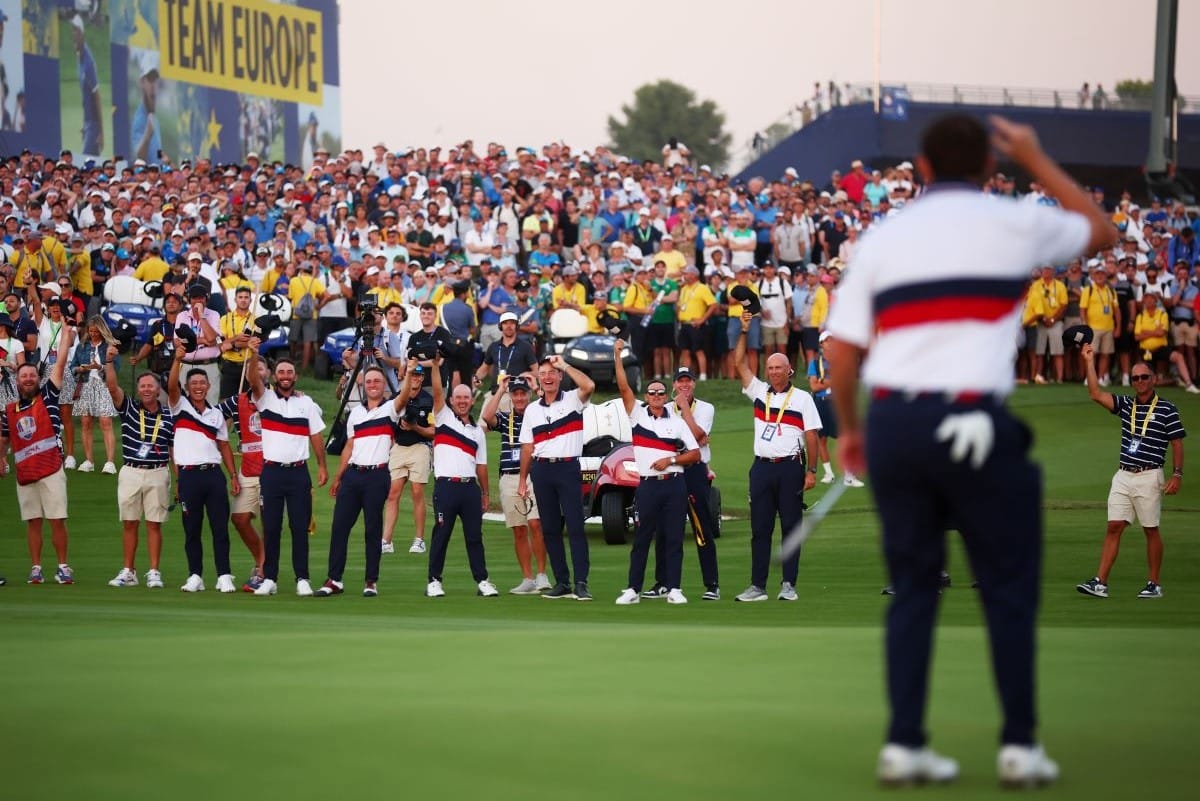The 1999 Ryder Cup at Brookline is one of those sporting moments where those watching – or in my case, listening – remember where they were. My father and I were on our way home from the All-Ireland Football Final, so, long before watching on your phone became an option, radio commentary was the best we could hope for.
I was 15 at the time, and can’t remember who was calling the action on the airwaves, but I distinctly remember the commentators’ outrage when the infamous green storming occurred. Now, I’m not here to debate the rights and wrongs of that – that’s been exhaustively covered, as has the incredible U.S. comeback that it was the crowning moment of. What’s less remembered, however, is that the issue of pay – or the lack thereof – dominated much of the narrative in the lead in.
Tiger Woods was the biggest name in the game by a distance, but David Duval had serious claims to the ‘best player in the world’ title having won eight PGA Tour events in the previous 19 months, and Mark O’Meara had won two majors in 1998 and the trio were unhappy that they were being asked to represent their country for free.
Fast-forward a quarter of a century, and it remains an issue, even though the aftermath of the 1999 dissent saw the introduction of charitable donations in the U.S. players’ names. In 2023, that was $200,000 per player, $100,000 of which goes to junior golf schemes and the remaining $100,000 to a charity of the individual player’s choice.
But that looks set to end, as The Telegraph were the first to report that plans are in place to see each of the 12 players on the United States team receive $400,000 in actual pay beginning next year.
There are two schools of thought on this issue. One is that the top golfers in the game are already grossly wealthy, and just by playing in the Ryder Cup, their profiles are raised and their value to sponsors increased, and this, of course, brings financial benefits down the line. Plus, there’s the idea that representing your country is a privilege in itself and that that should be enough.
But then there’s the other side of the coin. Without the players, the Ryder Cup doesn’t exist, or at least not as we know it. And in the 25 years since Brookline, the Ryder Cup as a money-making operation has grown gargantuanly. And when it was announced that ticket prices for tournament rounds were going to start at $750, it was only a matter of time before the thorny pay-for-play issue arose once again.
Personally, I’d much rather see players playing for pride, history and all of the other non-financial incentives that have made the competition great, but I’d also prefer the competition to remain accessible to the common fan and to not have corporate partnerships everywhere you turn. But let’s be realistic. The genie is out of the bottle on the latter, and there’s no forcing it back in.
The Ryder Cup as we knew it in the 20th century, is dead, and the beast that’s risen in its place is one where the number of zeros are all that matters. You need look no farther than the merchandise to see this. Everything from aftershave (from €85 a bottle in Rome) to ball markers (€35) emblazoned with the Ryder Cup logo will be on sale, not to mention the clothing ranges, all at healthy markups, and all of the brands supplying will already have paid healthily for the privilege.
That doesn’t mean that the actual competition itself is any less, though. From the moment that opening tee shot is struck until the final point is settled, winning their matches and being on the winning side is all that matters for the 24 players across both sides, and that won’t change if their bank balances are a couple of hundred thousand dollars healthier or not.
Patrick Cantlay might be the best example of that. The American might deny that his decision to go hatless during the 2023 Ryder Cup was a mini-protest at being asked to supply his talents pro-bono, but there’s seldom smoke without fire. This didn’t prevent him from fighting tooth and nail to keep the Americans in with an outside chance going into the final day, and the competition was all the better for his presence.
That the news has arrived in a time where the cost of living increases and financial burdens associated with them were one of the major reasons why the American people have voted Donald Trump back into the White House is unfortunate, but elite golfers have rarely been overly concerned with the plight of the common man.
But with the ticket prices, neither are the PGA of America.
If the huge increase – almost four-fold the cost of a ticket at Whistling Straits in 2021 – are to cover the players’ payments, then it’s a sad indictment of where elite golf has gone, but those tickets have still sold out and the next wave of ticket sales see the prices jacked up even higher.
Ultimately, the event will likely prove to the biggest Ryder Cup of all time from a financial perspective and that’ll be all the evidence the players need to determine they were right in demanding their slice of the pie.
























Leave a comment